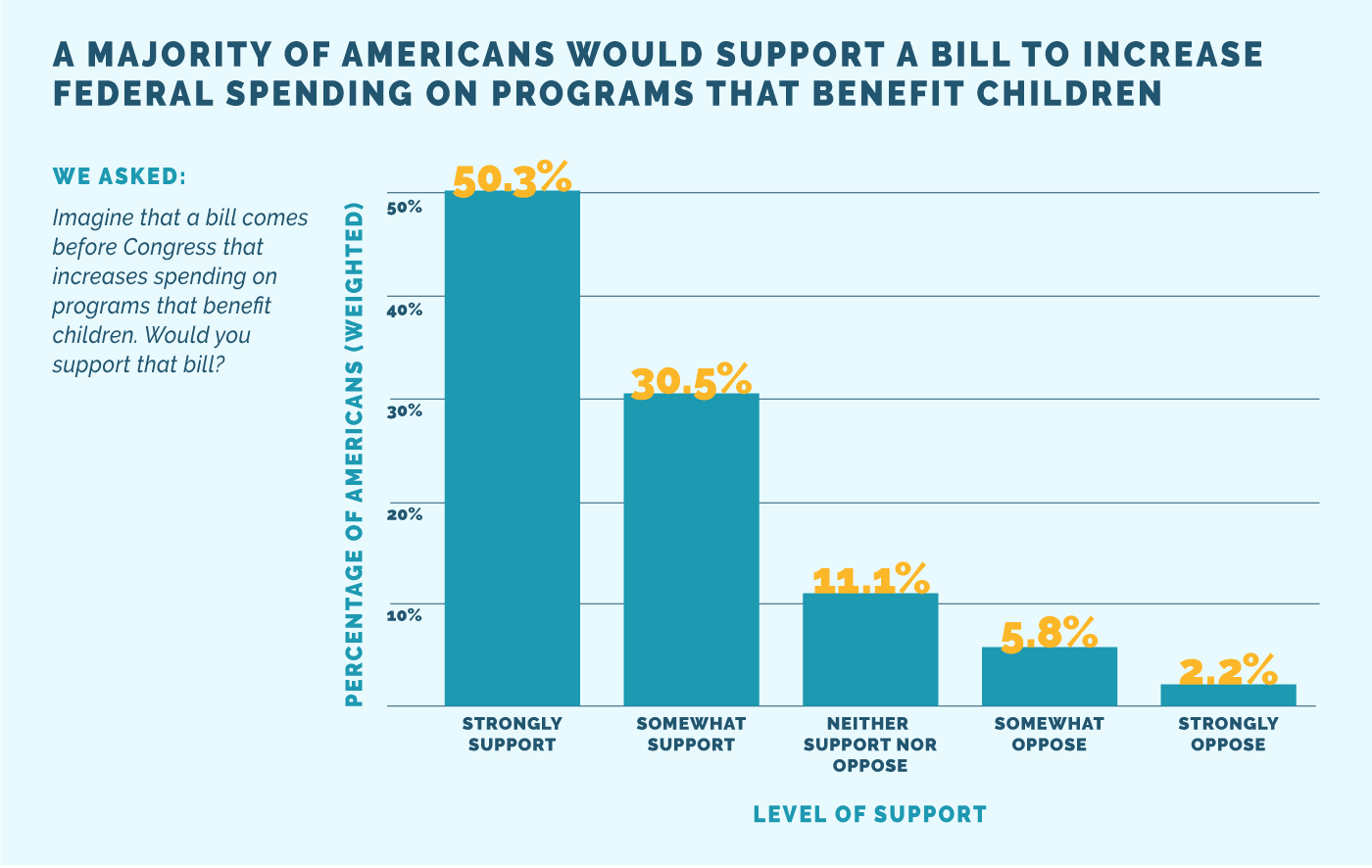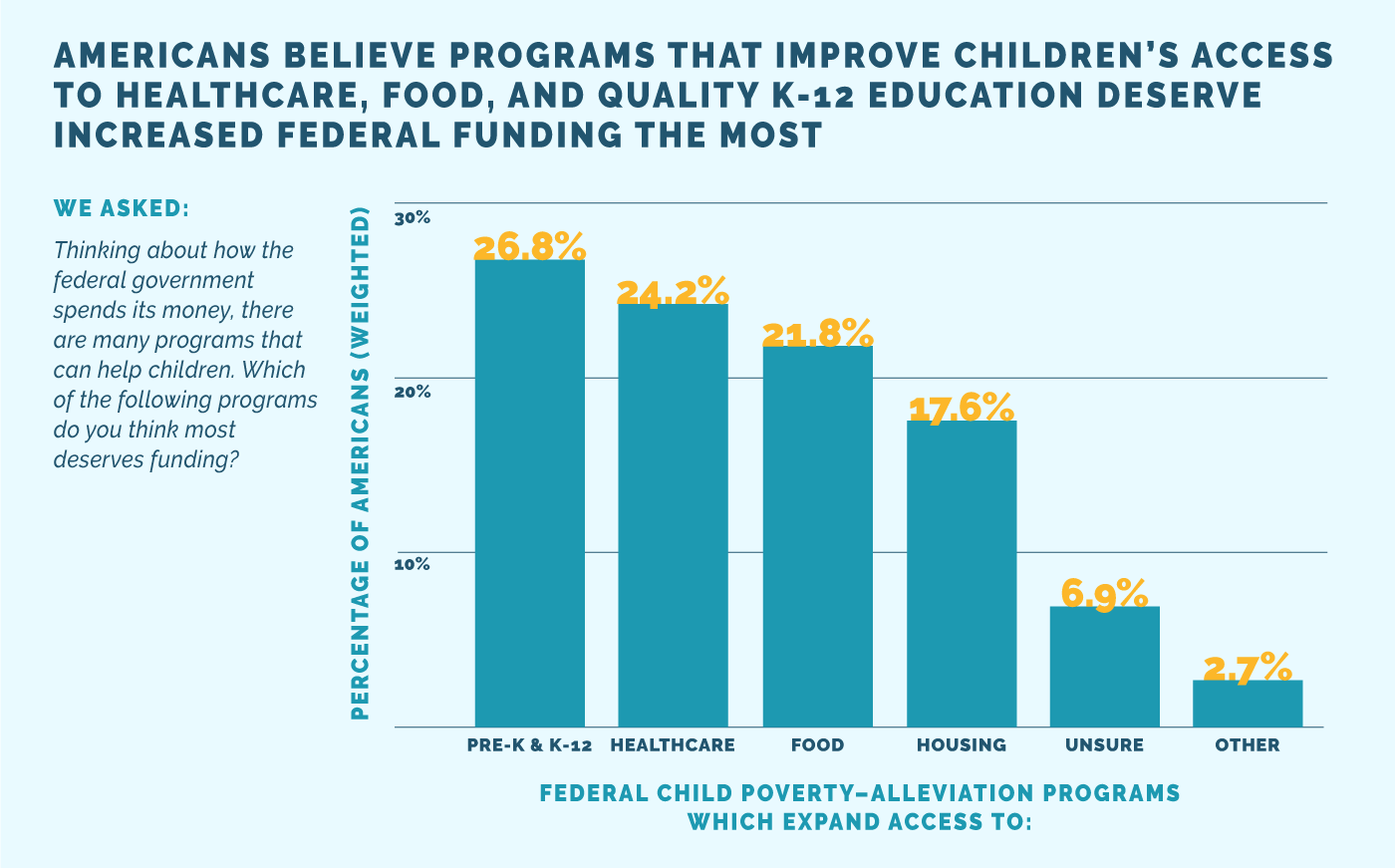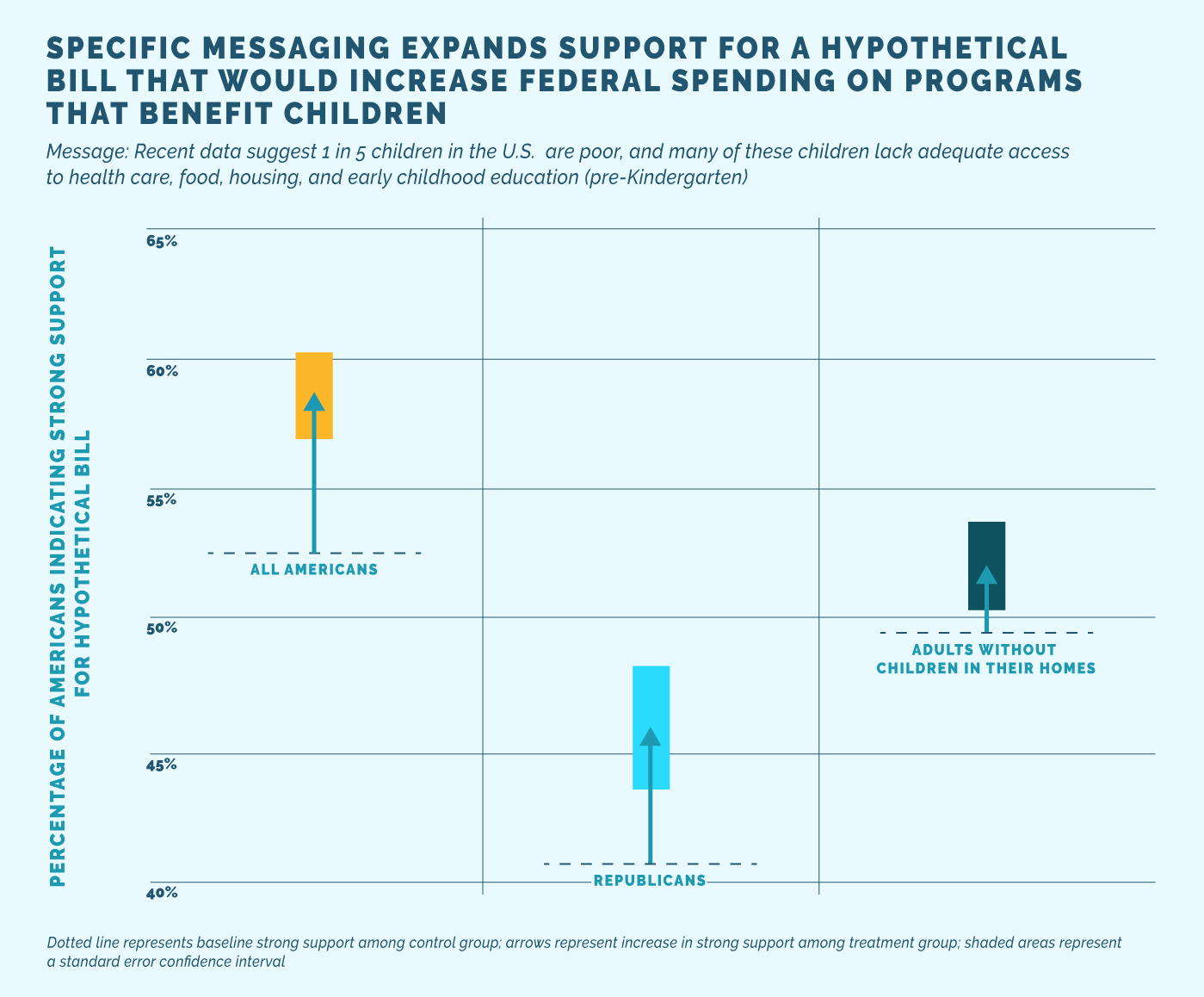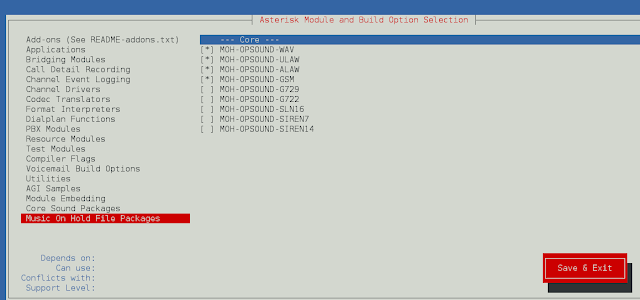Here at Civis Analytics, we recently discovered that an estimated eighty-one percent of Americans support increased federal spending on programs that benefit children — programs including strong support for enhancing children’s access to healthcare, affordable housing, quality K-12 education, and food — according to a survey we ran on behalf of the Children’s Defense Fund, the winner of our recent Ask America Anything contest. We also found that messaging that describes the impact of poverty on children increased strong support for these programs by an average of five percentage points, most notably among Republicans and adults without children in their household.
Our Work With the Children’s Defense Fund
On Giving Tuesday this past November, we invited nonprofit organizations to submit entries to our Ask America Anything contest. Here at Civis, we’ve been running the Ask America Anything contest for three years to help nonprofit organizations survey Americans about issues central to their missions. The contest winner receives the opportunity to add two questions to our rolling national survey of the U.S. population. We’ve worked with some outstanding organizations in past years (read more about our work with A Better Balance and The National Domestic Violence Hotline), and many outstanding organizations submitted proposals this year.
Children’s Defense Fund was the Ask America Anything winner this year, and their proposal — to study public opinion surrounding policies designed to end childhood poverty — resonated with the Civis team. For 45 years, the Children’s Defense Fund (CDF) has been on a mission to give children a strong start and successful passage to adulthood and has pursued this mission through a combination of policy development, legislative strategy, grassroots mobilizing and organizing efforts, and on-the-ground programs.
We paired with CDF in hopes of supporting this deeply important mission by gathering responses to our rolling national opinion survey around two key areas of interest to CDF:
First, CDF wanted to know how strongly Americans support increased federal spending on programs that benefit children, and what kind of messaging might persuade Americans to support increased federal spending.
Second, CDF wanted to understand which policy area — among children’s access to food, healthcare, early childhood education, affordable housing, and quality K-12 education — Americans think most deserves federal funding.
With recent federal fiscal policy changes, CDF aims to use the results to inform efforts to put domestic programs focused on the health and well-being of children on the agenda. With an understanding of the popularity of different policies and the effectiveness of different approaches to messaging, CDF aims to use the results to identify policy areas where existing support can be harnessed and where there are greater opportunities to increase awareness.
What We Found
We found that increased federal spending on programs which benefit children is broadly popular: based on responses to our survey, we estimate that 81% of Americans support such programs, while 50% strongly support them.

We also found that messaging that describes the impact of poverty on children increased strong support for these programs by an average of five percentage points. This child-focused messaging was more effective than messaging about the downstream economic effects of childhood poverty. It even increased support among people without children in the household, as well as Republicans, who had lower baseline levels of support.
Among respondents who were asked about which policy areas in particular deserve funding the most, four areas — access to quality pre-K and K-12 education, access to healthcare, access to food, and access to affordable housing — are particularly popular (27%, 24%, 22%, and 18%, respectively) indicating that existing support for these issues can be harnessed.
Message Testing
In order to get these results for CDF, we included a message test in our survey that used the same randomized controlled trial framework that pharmaceutical companies use to test new medications. We started by splitting our survey sample into a control group and a treatment group. The control group received no messaging in the message test, and we used it to establish baseline levels of support for the issue.
Among respondents in the control group who saw no messaging about how increased federal funding could lead to either positive effects in the lives of children or downstream economic effects for the U.S. as a whole, we found that almost 81% of respondents supported, at some level, increased federal spending on programs that benefit children, while over half of respondents strongly supported such programs.
Next, we split our treatment group into two groups. Each of the treatment groups was shown just one message. All survey respondents were randomly assigned to either the control group or one of the treatment groups. Using causal inference methods, we estimated a measure of how persuasive a given message was, in the form of a percentage point increase in likelihood to strongly support increased funding for programs that benefit children.
For CDF, we tested two messages: one about the downstream economic effects of childhood poverty on the U.S. as a whole, and another about the impact that interventions can have on the lives of impoverished children themselves. These messages were:
Economic impact message:
- “Lost productivity, worsened health and increased crime stemming from child poverty in the U.S. cost the nation about $500 billion dollars a year.”
Child impact message:
- “Recent data suggest 1 in 5 children in the U.S. are poor, and many of these children lack adequate access to health care, food, housing, and early childhood education (pre-Kindergarten).”
Overall, we found that messaging focused on the impact of poverty on children (the child impact message) boosts baseline intent to strongly support increased federal spending on programs that benefit children by five percentage points. Additionally, results for two particular subgroups stood out: both Republicans and respondents without minors in the household were persuaded by child impact messaging.

Conclusions
Our team is excited by the results of this work: we found that baseline support for increased federal spending for measures to eliminate childhood poverty, in general, is high and identified messaging likely to be effective in increasing strong support. We found that there’s popular support for federal spending on a variety of specific issues crucial to ending childhood poverty, and identified specific issues where advocacy work might be most effectively targeted. Most importantly, though, we hope we’ve provided the Children’s Defense Fund with actionable information they can use to further their goal of giving all children a strong start and successful passage to adulthood. That’s a goal we at Civis are proud to support.
Methodology
Civis Analytics surveyed 2,109 members of the general public using an online survey between January 22 and February 7, 2018. Respondents were sampled from nationally representative voter and consumer files. Results were weighted using a series of demographic variables. Survey toplines correspond to response frequencies among weighted responses; message testing results come from Civis’s proprietary causal inference message testing methodology.
Original Source




